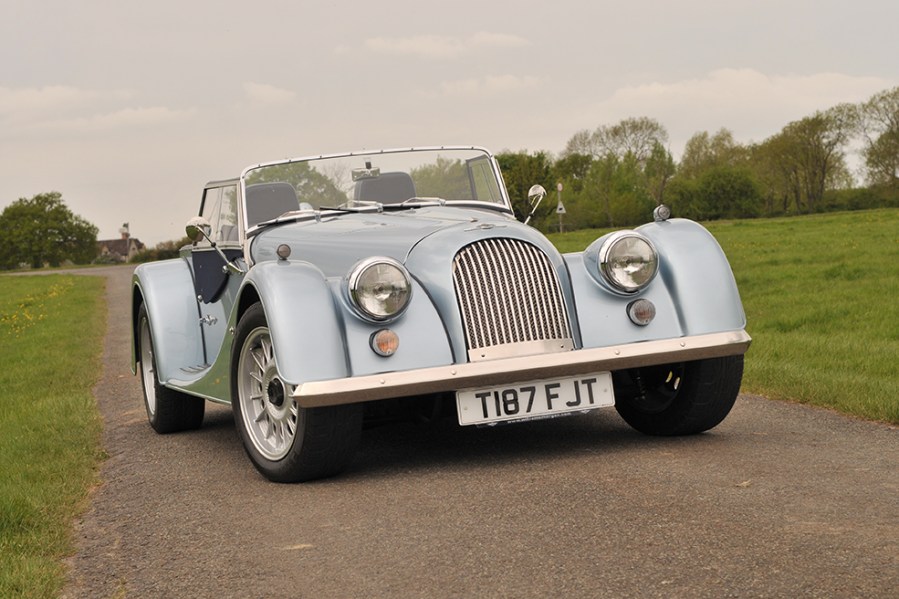Old fashioned but with fearsome modern performance, the Morgan Plus 8 is a gloriously silly British sports car
Words and images: Paul Wager
Produced by a firm which appeared to resist progress and preferred to cling doggedly to its old-fashioned wood-framed bodywork and labour-intensive hand assembly methods, the Morgan Plus 8 also had the distinction of being Britain’s fastest-accelerating car at one point, exhibiting a fearsome pace which belied its 1930s looks.
I once had cause to compare the Plus 8 with the TVR Griffith and the comparison isn’t quite as foolish as you might think. Both were produced by relative minnows in terms of the global car-making business and both are powered by the Rover V8.
Both also achieve their performance by using a separate chassis and lightweight bodywork – aluminium and ash for the Morgan and glass-reinforced plastic in TVR’s case.
There is of course one crucial difference: for all the stick it took back in the 1980s for its traditional way of doing things, the Morgan company is still in business and indeed thriving while TVR crashed into a metaphorical ditch in 2005. A would-be revival for the brand seems to be dead in the water as of 2024.
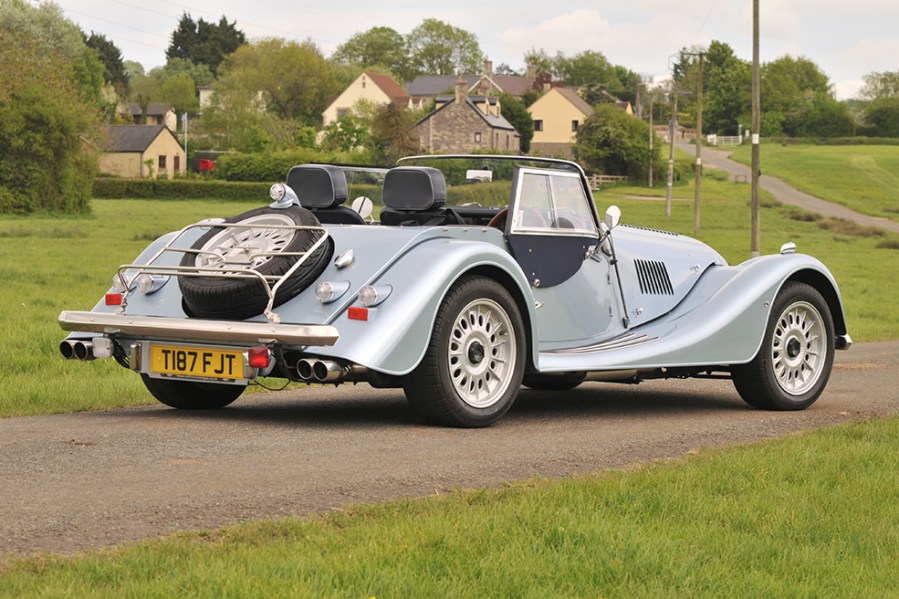
All of which sums up the timeless appeal of the Plus 8 – the quietly classy contender against the shouty newcomer epitomised by the TVR and its ilk.
The origins of the Plus 8 are as intriguing as Morgan itself. The story goes that Rover director Peter Wilkes visited the Malvern premises in May 1966 with a view to sounding out Peter Morgan as to whether he would be interested in a takeover by Rover.
Fortunately for the future prospects of the firm which bore his name, Peter Morgan politely refused the offer to join something which just two years later would become a part of the BL disaster. What did arise from the conversation though was the question of the recently acquired ex-Buick V8 engine which presented itself as an ideal replacement for the soon-to-be-obsolete Standard-Triumph unit then used in the Plus 4.
It seemed very much like a win-win situation, but the project had its difficulties: initially Rover was unable to supply a complete engine – it was still working on productionising it for the UK market – and Morgan race engineer Maurice Owen had to work from drawings.
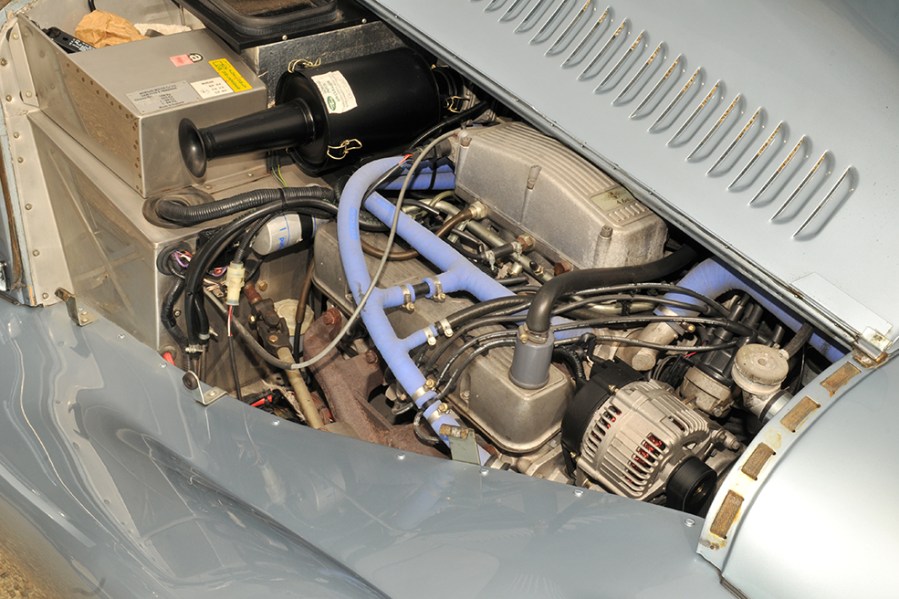
Owen subsequently sourced a used Buick engine which he had Rover adapt to become as close as possible to the dimensions of their production unit and this was fitted into a Plus 4 chassis.
With running prototypes built up, the project was hampered by the Leyland takeover of Rover in 1967, the delays being so acute that apparently at one point the Stag V8 was even suggested as an alternative. Eventually a compromise was reached where Morgan was promised engine deliveries after the Rover P6 3500 had been announced and so it was that the Plus 8 was duly unveiled at the 1968 Motor Show.
The firm delivered some 20 cars in that first year, all of them running the 3.5-litre V8 running on twin SU’s for a total of 151 bhp, backed up with 210 lbf.ft of torque at 2750rpm. The withdrawal of five-star fuel saw the compression ratio reduced in 1973 and power down to 143bhp, but from 1976 the SD1-specification engine was offered, bringing power back up to 155bhp. From this point, the engines on offer in the Plus 8 broadly followed the development of the V8 for the Range Rover: fuel injection was added in 1983 for a 190 bhp result, with the 3.9-litre engine used from 1990.
With the Plus 8 weighing in at 975kg, that was more than enough to provide searing acceleration, with the 3.9-litre injected car scorching to 60mph in 6.1 seconds in the hands of Autocar.
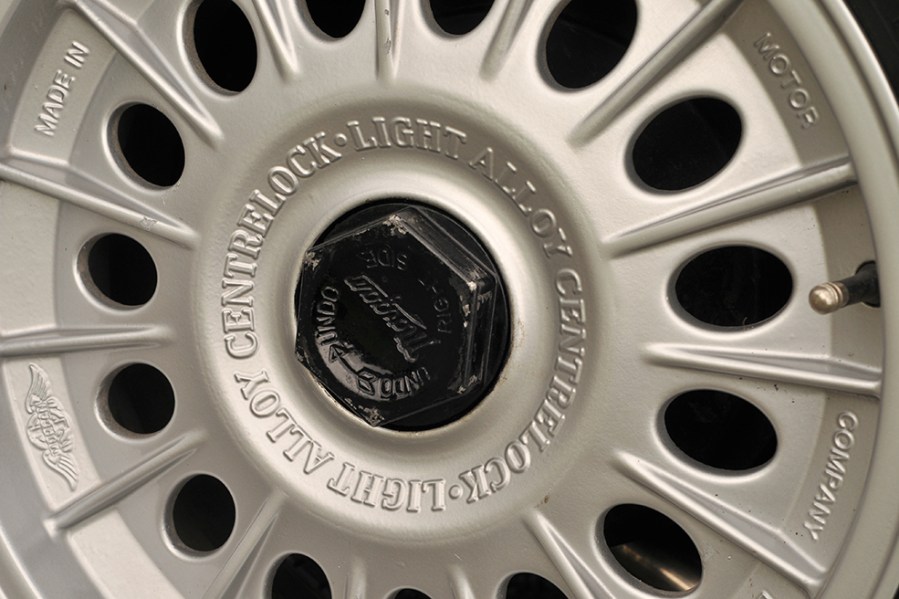
More was to come though: in 1996 the 4.6-litre version of the Rover engine was offered as an option, with 220 bhp and 260 lbf.ft on offer. Unsurprisingly, this made the Plus 8 devastatingly brisk but also an easy car to drive thanks to the torque. The car would continue to be produced in this form until 2004 when production was halted temporarily when Rover discontinued the V8. In 2012 the famous name made a return, this time packing a 4.8-litre BMW engine.
It’s the classic Rover-powered Plus 8 we’re driving here though and a superb example it is, too. Even by the admittedly high standards of the showroom at Williams Sports Cars it stood out as a gem and once out in the sunlight it didn’t disappoint.
Morgan may have clung to its traditional body-building methods long after the rest of the industry had moved on but the firm knew very well that this was part of the car’s appeal and didn’t allow it to prevent modern features being added. In this 1999 example, we find what is really a pretty civilised cabin, nicely trimmed and really pretty comfortable. The first owner drew heavily on the options list which although it may not include such things as heated sat nav and electric cup holders, did extend to blue leather-trimmed seats, radio, walnut dashboard, stainless mirror, door check straps and a Moto-Lita steering wheel among other things.
The ambience is very traditional, accentuated by the view down the long bonnet from the driver’s seat, the twin rows of louvres stretching towards the wing-top sidelights.
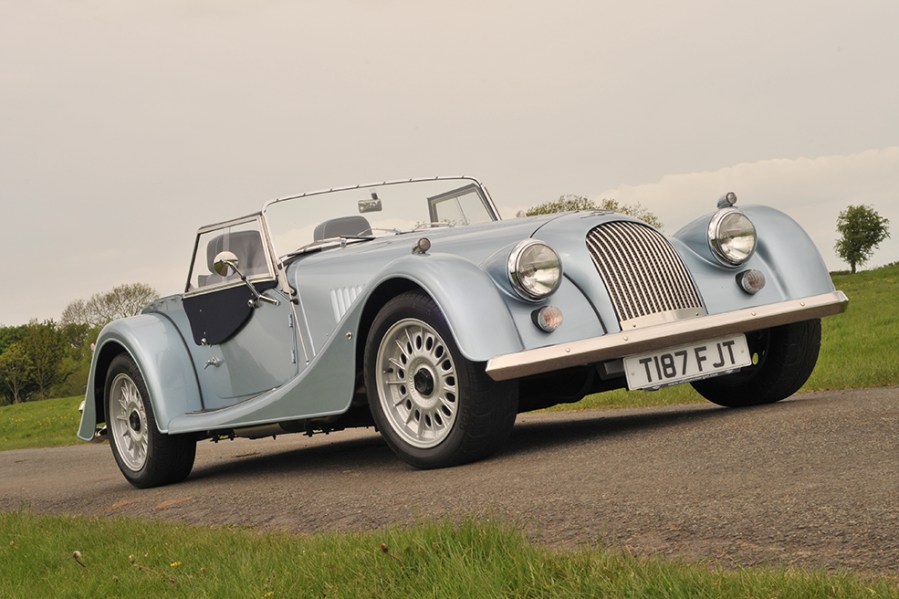
Here and there the dyed-in-the-wool car geek will spot bits from the Rover empire, once of them being the immobiliser fob of the GEMS engine management.
With a modern key-start – abandoned in the reborn Plus 8 for the modern starter button – the Rover engine fires easily and brings a sound quite unlike any production Range Rover ever built, with a throaty bass note from the quad-pipe exhausts exiting under the rear wings.
The Plus 8 of this vintage pairs the V8 with the R380 gearbox which offers a much lighter shift than the older LT77 unit and with a light clutch, the Plus 8 is an easy car to drive. No, there’s no power steering but at anything above walking pace it’s not an issue and really, the car doesn’t need it. Being aluminium, the V8 hardly increased the car’s weight over the older Triumph unit and with the upright position of the wheel, you use your upper arms to steer, in the way you find yourself doing in a Triumph TR3.
Our test route takes us over a cattle grid and it’s only in extreme situations like this that you’ll feel the age of the chassis and body design, with the wing tips doing an almost imperceptible shimmy as the bars of the grid send their vibrations through the car but in all other cases the Plus 8 feels commendably rigid.

When you consider the age of the basic design, that’s no mean feat, although the V8 installation did involve strengthening of the front crossmember area and the main chassis rails being spaced two inches further apart. The opportunity was taken to increase the wheelbase by 2 inches at the same time, both of these increases being repeated for 1973 and then again in 1976 when the Rover SD1 engine and gearbox were fitted, with the bulkhead also moved further back.
The result is a car with a better balanced weight distribution than you might assume and although Morgan’s sliding pillar front suspension layout may be archaic, it still does the business.
In deference to its pristine condition we didn’t drive this example hard, but I know from experience that with suitable familiarity the Plus 8 can be a tidy handler when required. The ride can be a touch bouncy but in most respects it’s surprisingly capable and with the torque of the V8 it’s an easy car to drive fast.
With 260lb ft on offer from just over 2500rpm, there’s a decisive shove to be had in pretty much any gear and in reality there’s no need to rev the V8 hard to make good progress. And in any case it seems somehow unseemly to drive a Plus 8 on the limit – that’s something best left for the TVR crowd.
All of which adds up to a car which is surprisingly suitable for a long road trip and explains why you often see European-registered Morgans in far-flung parts of the UK, grilles spattered with flies and – naturally – the roof down in the best Morgan tradition.
Perhaps the best comment on Morgan ownership comes in the comment from a specialist we heard recently, who pointed out that it’s not unusual to see a slightly shabby example – often impeccably maintained mechanically but looking a bit scruffy cosmetically. The reason of course is that owners are too busy enjoying themselves behind the wheel rather than fussing about with picnic hampers and tyre black. Try telling that to the TVR owners worrying about stonechips and cracked gel coats!

